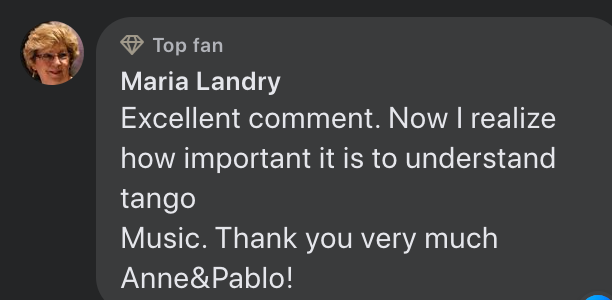Poor Performance: MLB Analysts Rate Angels' Prospect Pipeline

Table of Contents
Analyst Ratings and Rankings: A Critical Look
Several reputable sources have placed the Angels' prospect pipeline at the bottom of major league rankings. These rankings paint a bleak picture of the organization's ability to develop and cultivate future MLB talent. A critical look at these assessments reveals a concerning trend.
- Baseball America: Consistently ranks the Angels' system among the lowest in the league, often placing them in the bottom five. For example, in their 2023 rankings, they placed the Angels' prospect pipeline at 27th overall, highlighting a significant lack of high-ceiling talent.
- ESPN: Shares a similar assessment, frequently citing a lack of depth and high-end prospects in key positions. Their recent rankings echoed the concerns raised by Baseball America, further solidifying the negative perception of the Angels' farm system.
- MLB Pipeline: Offers a slightly more optimistic but still underwhelming assessment of the Angels' minor league prospects. While acknowledging some promising young players, their rankings still place the Angels significantly lower than most contending teams, especially within the AL West. This comparatively less dismal ranking still underlines the need for significant improvement.
Comparing the Angels' rankings to other teams in the AL West reveals a stark contrast. Teams like the Seattle Mariners and the Texas Rangers boast consistently higher-ranked prospect pools, highlighting a significant gap in organizational development. This disparity underscores the urgent need for the Angels to address the shortcomings in their player development strategy.
Identifying Weaknesses in the Angels' Prospect Pipeline
The consistently poor ratings point to several critical weaknesses within the Angels' prospect pipeline. These issues span across various aspects of the organization, from scouting to player development.
Lack of High-Ceiling Prospects
A glaring deficiency is the absence of top-tier, high-ceiling prospects. The Angels lack that standout player who projects as a future All-Star or franchise cornerstone. This shortage of elite talent significantly hampers the organization's ability to replenish its major league roster organically.
- Limited number of top-100 prospects in league-wide rankings.
- Absence of highly-rated pitching prospects capable of reaching the major leagues and becoming consistent contributors.
- A thin pool of position players with the potential to become impact players at the major league level.
International Scouting Concerns
The Angels' international scouting efforts have also come under scrutiny. Several analysts point to a lack of success in identifying and signing high-potential players from Latin America and other international markets. This failure to tap into a rich source of talent further contributes to the weakness of their prospect pipeline.
- Limited success rate in signing top international prospects compared to their AL West rivals.
- A perceived lack of a robust international scouting network.
- Need for improved strategies and resource allocation in international scouting.
Player Development Issues
Concerns extend beyond scouting to the Angels' player development programs. There are instances of prospects failing to meet expectations, suggesting potential flaws in coaching, training, or support systems. This raises questions about the effectiveness of the organization's approach to nurturing young talent.
- Several prospects showing stalled development or regressing in performance.
- Concerns about the quality of coaching and training facilities at minor league levels.
- Need for improved player performance monitoring and data-driven development strategies.
Potential Reasons for Poor Performance
The underwhelming performance of the Angels' prospect pipeline stems from a confluence of factors, including strategic decisions, resource allocation, and unforeseen circumstances.
Draft Strategy and Acquisitions
The Angels' draft strategy and player acquisitions have been criticized for not consistently yielding high-impact prospects. A focus on short-term solutions over long-term development might be contributing to this issue.
- A history of drafting for need rather than focusing on the highest potential talent.
- Limited success in acquiring impactful prospects through trades.
- A need for a more comprehensive and long-term oriented drafting strategy.
Organizational Structure and Resources
The organizational structure and resource allocation within the Angels' minor league system might also be contributing factors. Insufficient investment in coaching, training, and facilities could hinder player development.
- Potential underinvestment in scouting and player development personnel.
- Lack of advanced technology and analytics to optimize player development.
- A need for a more robust and well-funded minor league system.
Injury Rates Among Prospects
High injury rates among prospects can significantly impact their development and potential for future success. This factor, while sometimes unavoidable, could be contributing to the perceived weakness of the Angels' system.
- Need for improved injury prevention and recovery programs.
- Analysis of potential contributing factors to high injury rates.
- Implementation of best practices in strength and conditioning programs.
The Impact on the Angels' Future Success
The weak Angels' prospect pipeline has significant implications for the team's long-term competitiveness. Their continued reliance on free agency and trades to fill roster gaps, rather than organic development, is unsustainable in the long run.
- Limited internal options to replace aging or departing players.
- Increased reliance on expensive free-agent signings, hindering long-term financial stability.
- Potential for a steep decline in competitiveness once their current star players retire or leave.
The Future of the Angels' Prospect Pipeline
The consistently poor analyst ratings of the Angels' prospect pipeline highlight serious concerns about the organization's long-term viability. The identified weaknesses – a lack of high-ceiling prospects, issues with international scouting, player development problems, and flawed drafting and acquisition strategies – require immediate and decisive action. The long-term implications for the team's success are significant, potentially leading to a protracted period of rebuilding and decreased competitiveness. What are your thoughts on the future of the Angels' prospect pipeline? Share your predictions and suggestions regarding the Angels' farm system and its minor league prospects in the comments below!

Featured Posts
-
 The Vaticans Finances An Unresolved Crisis Under Pope Francis
May 08, 2025
The Vaticans Finances An Unresolved Crisis Under Pope Francis
May 08, 2025 -
 Auto Dealers Intensify Fight Against Ev Sales Requirements
May 08, 2025
Auto Dealers Intensify Fight Against Ev Sales Requirements
May 08, 2025 -
 Counting Crows Slip Out Under The Aurora Exploring The Songs Musicality And Production
May 08, 2025
Counting Crows Slip Out Under The Aurora Exploring The Songs Musicality And Production
May 08, 2025 -
 Oklahoma City Thunder Vs Houston Rockets Where To Watch Odds And Match Preview
May 08, 2025
Oklahoma City Thunder Vs Houston Rockets Where To Watch Odds And Match Preview
May 08, 2025 -
 Analysts Bitcoin Chart May 6 Signs Point To An Upcoming Rally
May 08, 2025
Analysts Bitcoin Chart May 6 Signs Point To An Upcoming Rally
May 08, 2025
Latest Posts
-
 Understanding The Context And Inspiration Behind Counting Crows Slip Out Under The Aurora
May 08, 2025
Understanding The Context And Inspiration Behind Counting Crows Slip Out Under The Aurora
May 08, 2025 -
 Counting Crows Announce Las Vegas Show Tour Dates And Ticket Info
May 08, 2025
Counting Crows Announce Las Vegas Show Tour Dates And Ticket Info
May 08, 2025 -
 Counting Crows Slip Out Under The Aurora Exploring The Songs Musicality And Production
May 08, 2025
Counting Crows Slip Out Under The Aurora Exploring The Songs Musicality And Production
May 08, 2025 -
 Counting Crows Las Vegas Strip Concert Announced
May 08, 2025
Counting Crows Las Vegas Strip Concert Announced
May 08, 2025 -
 Jones Beach Concert Cyndi Lauper And Counting Crows Live
May 08, 2025
Jones Beach Concert Cyndi Lauper And Counting Crows Live
May 08, 2025
